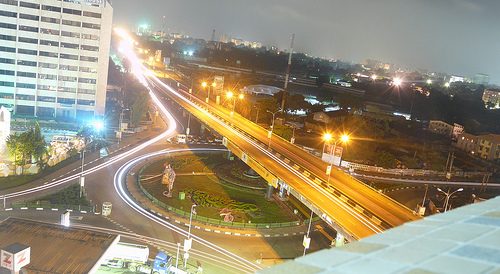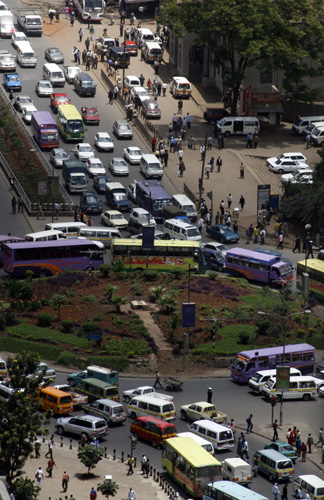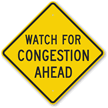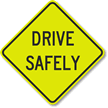Traffic accidents eating into developing world’s growth
Traffic accidents kill well over a million people each year throughout the world, with higher rates in poorer countries. That number, while already quite high, is expected to triple to about 3.6 million per year, according to a SmartPlanet, a tech and business blog.
A study conducted by the Pulitzer Center suggests that developing countries generally have higher rates of traffic fatalities than developed countries. According to the study, countries with large urban areas tend to have the highest rates of traffic deaths. According to the Center, in Africa generally, “The risk of dying as a result of a road traffic injury is greatest…more than 24 fatalities per 100,000 in population. Nigeria has the continent’s worst record—33.7 deaths per 100,000 in population.”

Rates of traffic accidents in the developing world – places like Lagos, Nigeria (pictured) – are set to triple, creating a further drag on growth. From Padmanabh Nimkar.
Areas with high population densities, predictably, have the highest incidence of traffic deaths due to the sheer number of vehicles and people. In Kenya, for instance, “Overcrowded, unregulated and unsafe public transport contribute significantly to road traffic deaths and injuries in the developing world.” New York is a notable outlier to this trend; despite its extremely high population density, the city’s streets are “among the safest in the world.”
In addition to the tragedy of losing lives, the effect of unsafe roads may have a broader economic effect on many countries. Elsewhere, the Pulitzer Center argues that increasingly high traffic-death rates will impact developing countries’ abilities to have sustainably high levels of economic growth. This is because of the high costs of traffic accidents, reportedly “between 1 and 3 percent of GDP in low- and middle-income countries, an amount that can offset the billions of dollars of aid money that these countries currently receive.” Combined with the fact that poor countries “only account for about half of the world’s traffic, [but] they’re where 90 percent of traffic fatalities occur,” the problem clearly needs to be addressed.
As with many issues in developing countries, one important step to a solution is to raise awareness. To do that, groups like the Pulitzer Center continues to publish articles, interactive maps, and statistics on world traffic safety in a series dubbed “Roads Kill.” In addition to such journalistic efforts, road safety issues are very much on the minds of international organizations, like the United Nations. In 2010, the UN announced their Decade of Action program, an attempt to raise awareness on the dangers of road safety throughout the developing world. The initiative aims to stabilize and ultimately reduce the number of road traffic deaths throughout the world. The Decade of Action has a tag that they hope will become as iconic and recognizable of a symbol as the AIDS, breast cancer, and troop support ribbons.

According to the Pulitzer Center, overcrowding (including on public transit) have set a tinderbox on fire in Nairobi, Kenya, one of the world’s more dangerous places to be on the road. From DEMOSH.
Many factors that contribute to unsafe traffic conditions are likely indicative of the larger problems of inefficient government spending, inadequate institutions, and poverty. If roads are full of potholes or buses are still on the road despite being desperately in need of maintenance, government would do well to allocate funding to fix these problems. This issue is complicated by the high costs of traffic accidents. If governments don’t have enough money to deal with traffic accidents as they happen, it’s unlikely that they will have enough money to provide a solid level of infrastructure. Even providing clear and consistent signage, along the lines of the United States’ MUTCD signs, could do wonders in alerting drivers of potential dangers on the roads.
Regulation may also help solve some problems. If it takes very little effort to obtain a driver’s license or drive a bus, measures like increasing the standards or requiring road safety courses inevitably create more cautious drivers. Where unsafe cars are the source of a high proportion of accidents, a government trade-in program may be in order.
Though any solution we propose will oversimplify matters, fixes like these provide a good basis for discussion of the issues of road safety in the developing world. Groups like the UN and the Pulitzer Center are making excellent strides in attempting to raise awareness of an unheralded issue that plagues a large portion of the world.
Category: Automotive, Enforcement, Infrastructure, Road safety


















